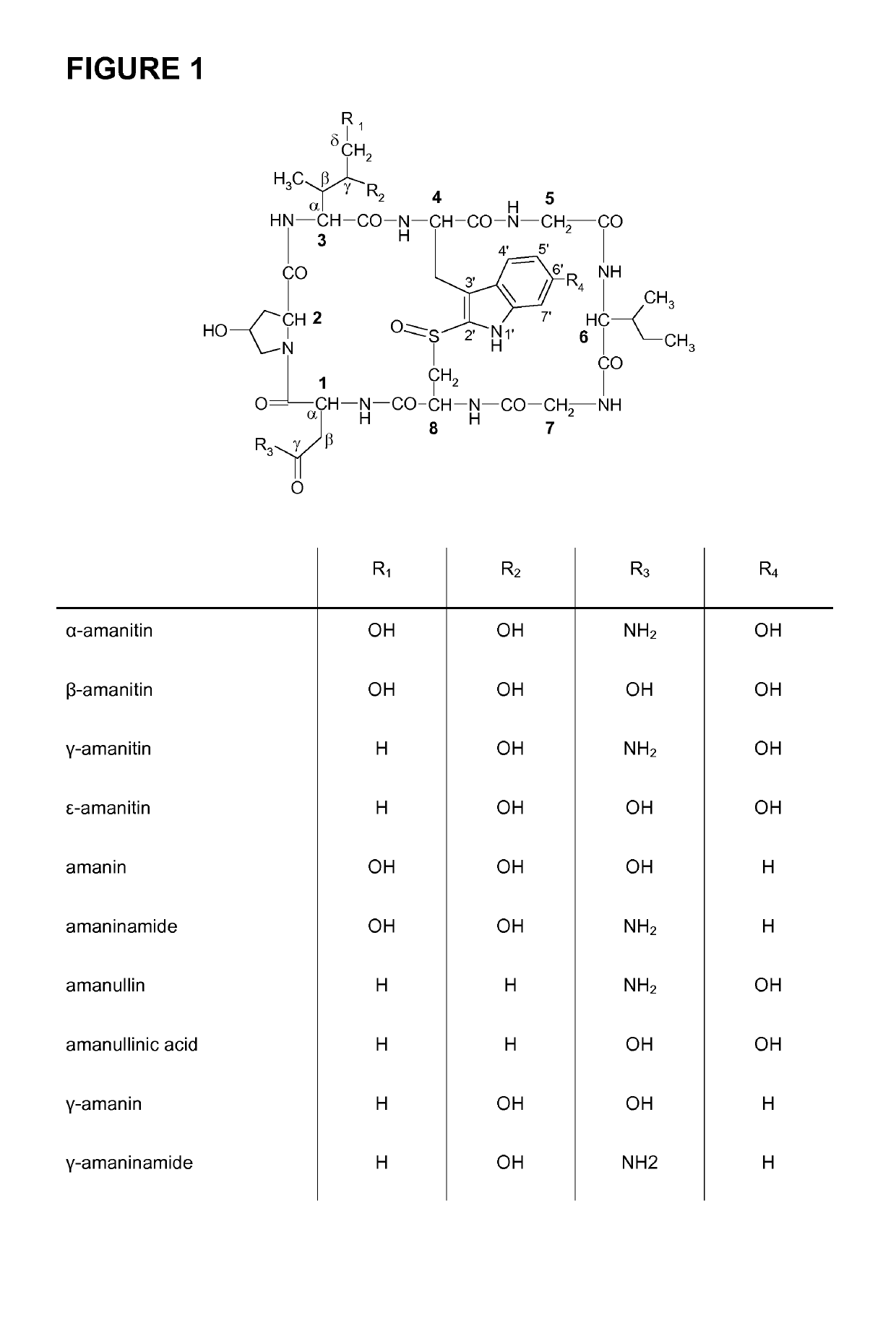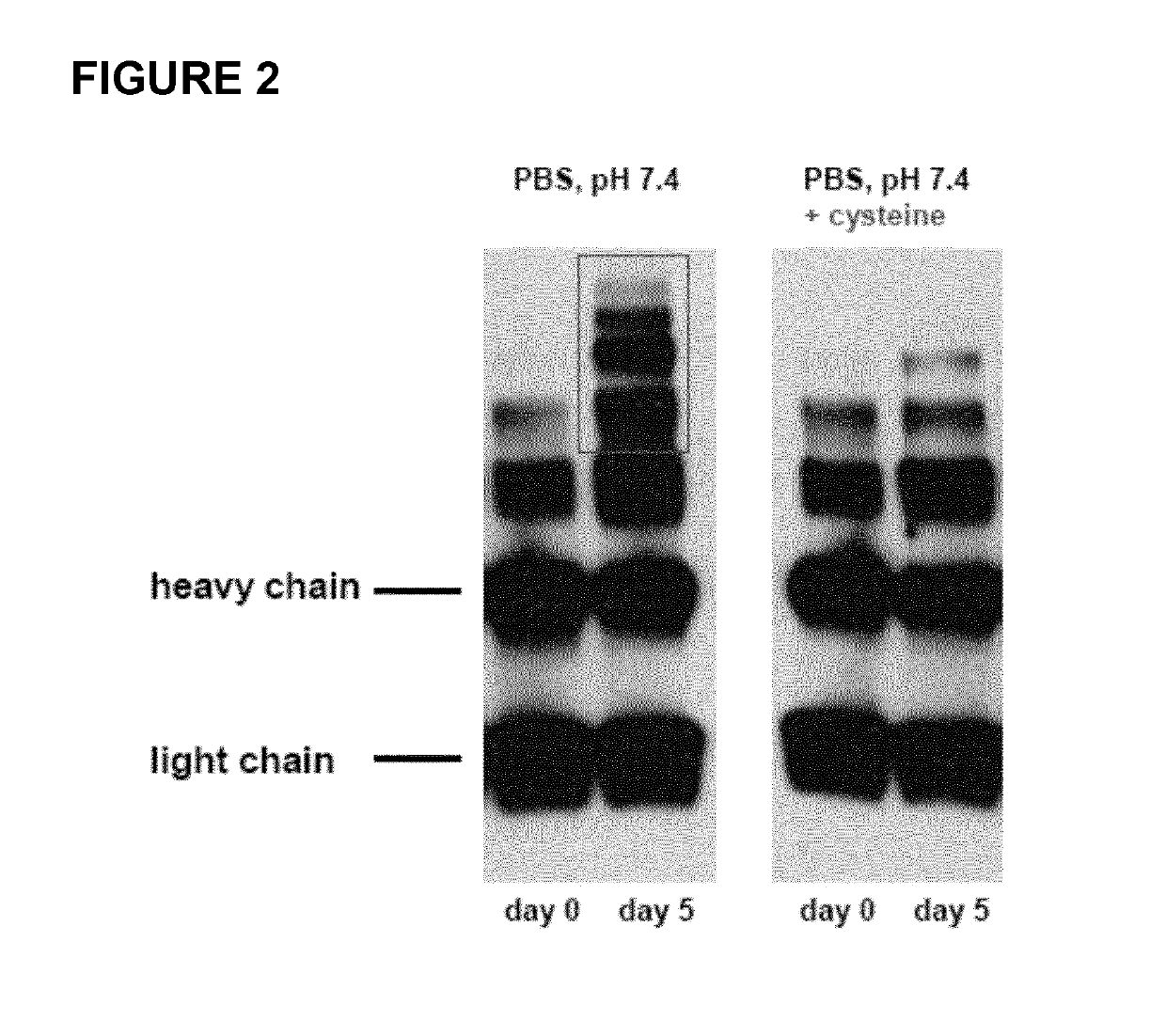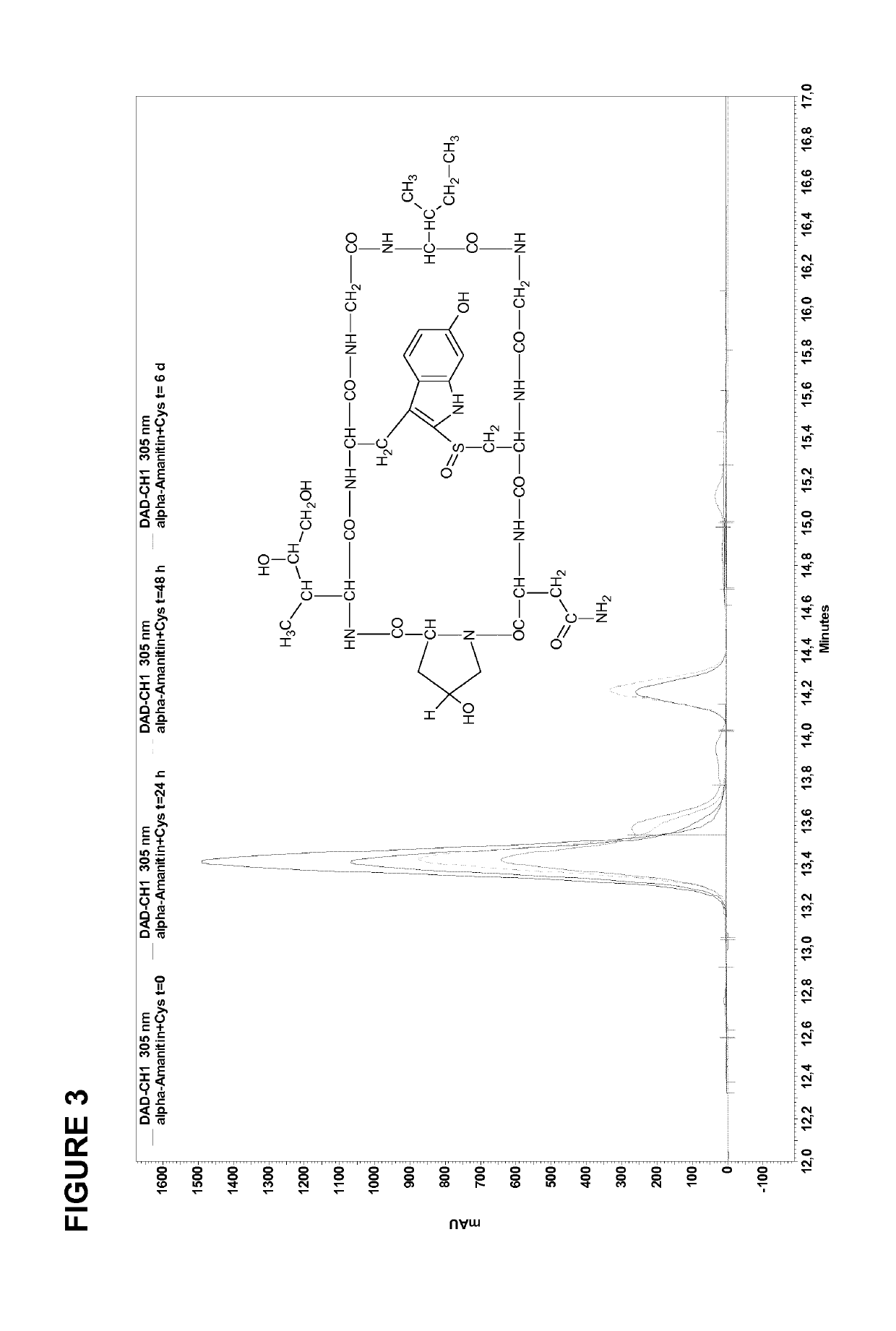Amanitin antibody conjugates
a technology of amanitin and conjugates, which is applied in the field of amanitin antibody conjugates, can solve the problems of prolonged median survival of many years, renal failure, and still considered incurable diseases of mm, and achieve the effect of limiting toxicity and maximizing the efficacy of ad
- Summary
- Abstract
- Description
- Claims
- Application Information
AI Technical Summary
Benefits of technology
Problems solved by technology
Method used
Image
Examples
example 1
Synthesis of Amatoxin-Linker HDP 30.2115
[0103]Linkage of antibody to toxin can occur either to cysteine or lysine residues, a specific tag or non-natural amino acids of the antibody. In order to obtain homogenous ADC products with specific DAR of 2, site-specific conjugation to cysteine in combination with genetic engineered Thiomabs is preferred. Key attributes of the linker include the requirement to be stable in plasma in order to prevent the uncontrolled release of the toxic payload into the circulation, and on the other hand the toxin needs to be released within the cell after internalization of the ADC upon target binding. Release of the toxin inside the target cell can occur either via cleavable or non-cleavable linkers. Cleavable linkers can be cleaved from the payload via a variety of mechanism including acidic degradation as consequence of lower pH inside the cell compared to circulation and protease cleavage by the protease cathepsin B or thiol-disulfide exchange attribut...
example 2
Properties of Constructs Based on HDP 30.2105
[0166]Various experiments were performed to compare the properties of constructs based on di-deoxy amanitin derivative HDP 30.2105 with those of other amanitin variants. The results of these experiments are shown in FIGS. 2 to 14.
example 3
Generation and Expression of Thiomab Antibody J22.9-ISY-D265C
[0167]Conjugation of the antibody with linker and toxin can occur to lysine or cysteine residues, resulting in highly variable drug-antibody ratio (DAR). Since potency and toxicity is strongly influenced by DAR, homogeneity and comparability of the ADC with predictable DAR is favourable. Antibodies with engineered reactive cysteine residues (thiomabs) allow for site-specific conjugation and therefore, amino acid aspartic acid at position 265 has been exchanged to cysteine (D265C). Thus, the resulting antibody variant contains two introduced cysteines at each chain of the Fc region, which serves as coupling site for the toxin-linker compound and allows production of ADCs with DAR=2.
[0168]Sequence modifications in the Fc-region of the antibody can have dramatic influence in linking antibody-mediated immune responses with cellular effector functions, since residues in the Fc-region are responsible for interaction with IgG Fcγ...
PUM
| Property | Measurement | Unit |
|---|---|---|
| Time | aaaaa | aaaaa |
| Time | aaaaa | aaaaa |
| Time | aaaaa | aaaaa |
Abstract
Description
Claims
Application Information
 Login to View More
Login to View More - R&D
- Intellectual Property
- Life Sciences
- Materials
- Tech Scout
- Unparalleled Data Quality
- Higher Quality Content
- 60% Fewer Hallucinations
Browse by: Latest US Patents, China's latest patents, Technical Efficacy Thesaurus, Application Domain, Technology Topic, Popular Technical Reports.
© 2025 PatSnap. All rights reserved.Legal|Privacy policy|Modern Slavery Act Transparency Statement|Sitemap|About US| Contact US: help@patsnap.com



